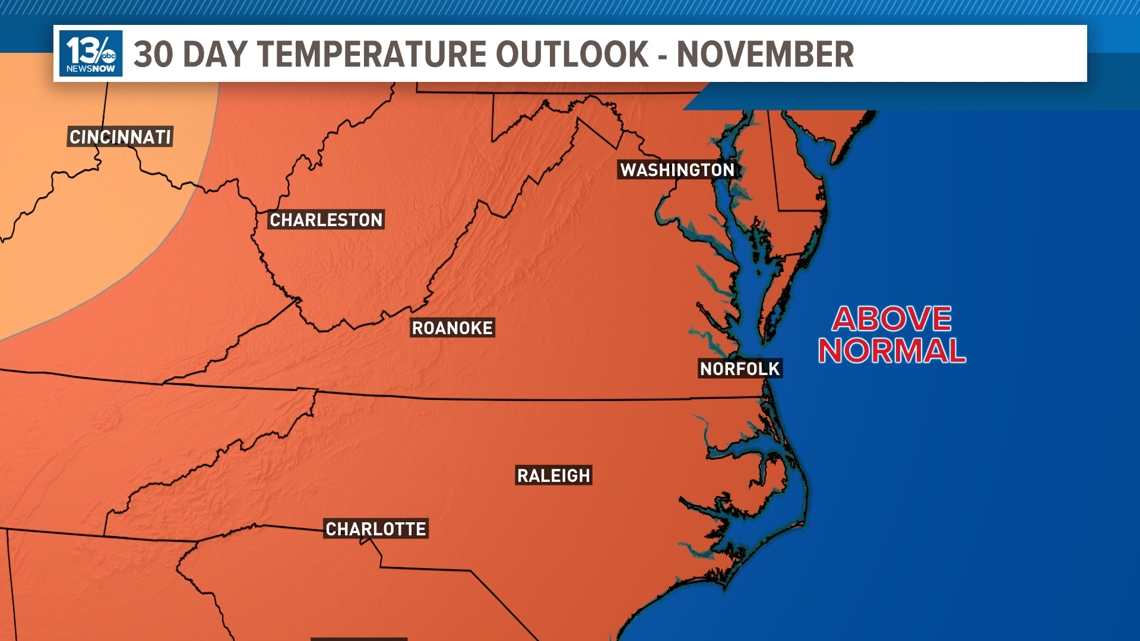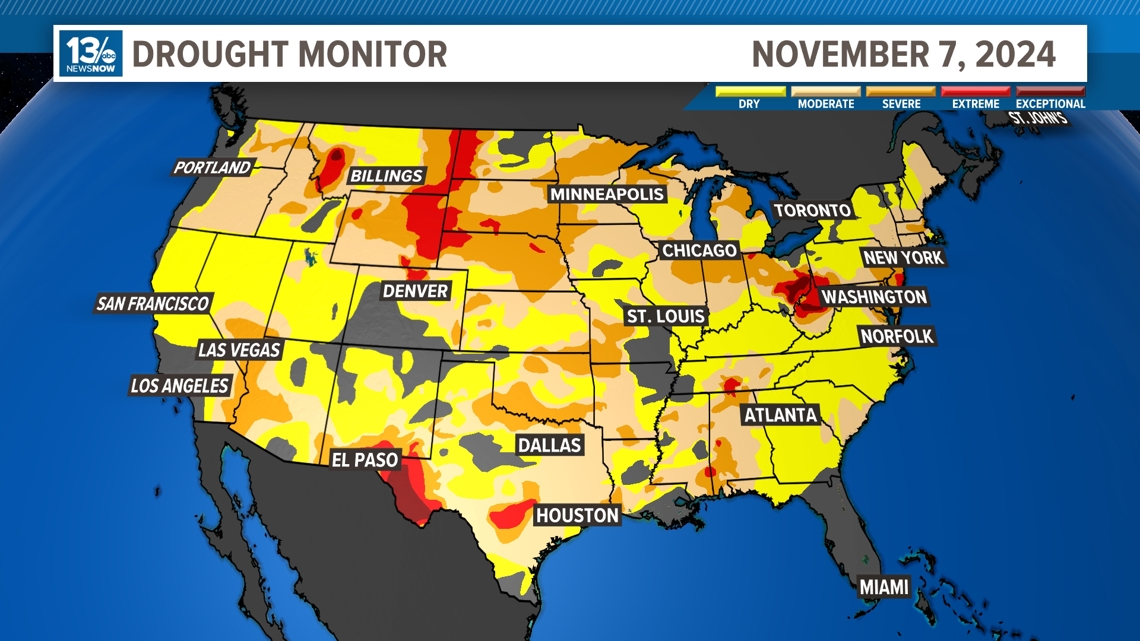NORFOLK, Va. — The updated U.S. Drought Monitor was released this morning and Hampton Roads and northeast North Carolina continue to be in moderate drought. With little rainfall for most of the region over the past 7 days, the areas under moderate drought expanded westward to include more inland cities and counties.
Even drier conditions to the north Including Accomack County and northern Northampton County on Virginia's Eastern Shore are now under severe drought. The severe drought has also extended south on the west side of the Chesapeake Bay down through the Northern Neck and northernmost parts of the Middle Peninsula.
While there are chances for a few isolated showers Thursday into early Friday morning, there is nothing in the immediate forecast suggesting we will have significant drought relief.
A look ahead over the coming 30 days offers little hope of abundant rainfall. In fact, the current 30-day outlook from NOAA's Climate Prediction Center calls for drier and warmer conditions than normal for the mid-Atlantic region.




Hampton Roads is not alone; much of the United States is experiencing significant drought conditions, particularly in the West, Southwest, and Great Plains and parts of the Ohio River Valley.
The U.S. Drought Monitor has consistently reported dry conditions across large portions of California, Nevada, Arizona, New Mexico and Texas, as well as parts of Colorado, Oklahoma, Wyoming and Montana. These regions are grappling with varying levels of drought intensity.


The current drought conditions across the country are driven by a combination of factors, including below-average rainfall, high temperatures, and reduced snowpack in the mountains, which typically serve as natural water reservoirs.
Climate change may also be exacerbating these conditions, increasing the frequency and severity of droughts across the country. In some areas, water levels in key reservoirs like Lake Mead and Lake Powell, which supply millions of people in the West, have reached critically low levels, impacting agriculture, water supply and hydropower generation.

